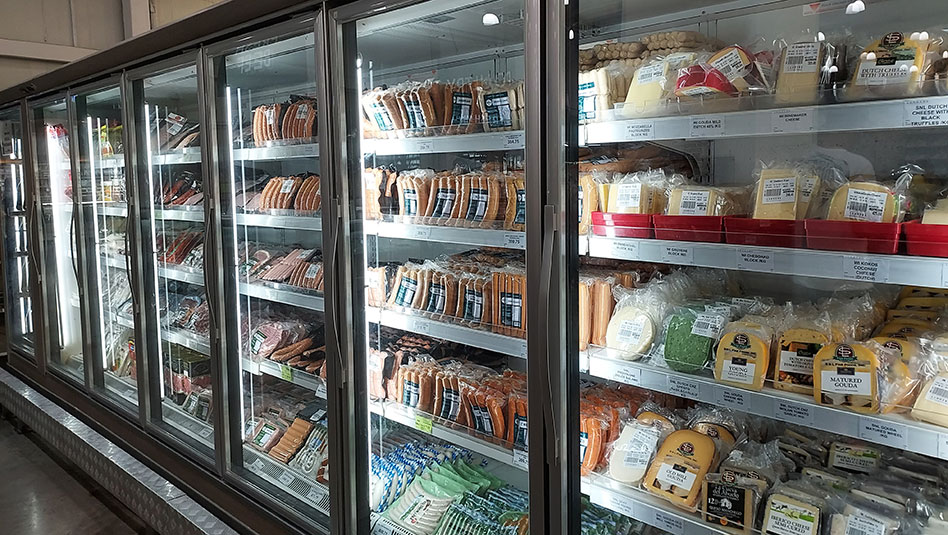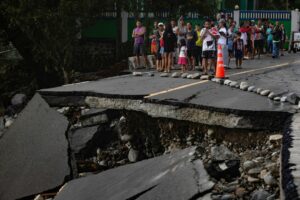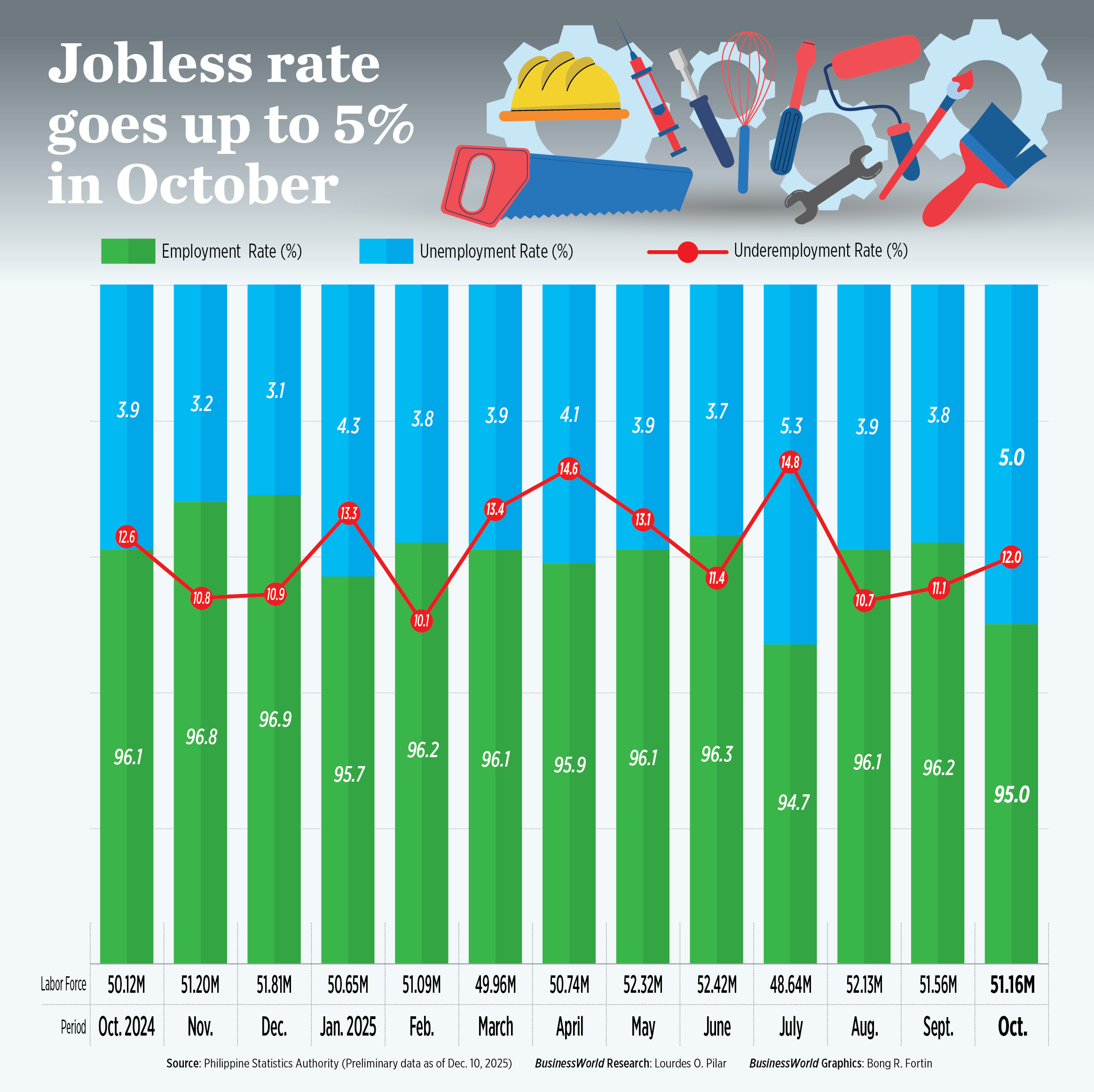Emerging risks to inflation may limit the Philippine central bank’s ability to ease further in 2026 despite an expected economic slowdown, analysts said.
John Paolo R. Rivera, a senior research fellow at the Philippine Institute for Development Studies, said another 25-basis-point (bp) cut signaled by the central bank for 2026 would not suffice to spur the economy.
“A final 25-bp rate cut would help at the margin, but it may not be enough on its own to materially lift growth if fourth-quarter (growth) comes in around 3.8%,” he told BusinessWorld in a Viber message.
Last week, Bangko Sentral ng Pilipinas (BSP) Governor Eli M. Remolona, Jr. said gross domestic product (GDP) growth in the fourth quarter might settle at 3.8%, easing from 4% in the third quarter.
If realized, it would be the slowest growth rate since 3% in the third quarter of 2011 and bring full-year expansion to 4.7%, under the government’s 5.5-6.5% target.
However, Mr. Rivera said the central bank’s current easing cycle will likely end soon as food prices and peso’s weakness pose inflationary risks.
“As for easing space, the BSP likely has limited room left,” he said. “With growth projected to stay below target but inflation risks still present (from food prices and the (peso’s) depreciation), BSP must balance support for growth with price and financial stability.”
ANZ Research Chief Economist for Southeast Asia and India Sanjay Mathur and economist Arindam Chakraborty noted that the peso’s recent performance against the dollar has not affected inflation, amplifying calls for another 25-bp cut in February.
“In our view, the subdued growth and inflation prospects suggest there is room for further rate cuts,” they said in a note released late on Thursday. “We anticipate another 25-bp rate cut in Q1 2026, bringing the terminal policy rate to 4.25%.”
The peso has hit the P59-per-dollar several times since November, even slumping to a fresh low of P59.22 against the greenback on Dec. 9.
The Monetary Board last week lowered key borrowing costs for a fifth straight meeting by 25 bps to an over three-year low of 4.5%, citing subdued inflation and slowing growth. It has so far delivered a total of 200 bps in cuts since it began its easing cycle in August 2024.
Mr. Remolona earlier said they might cap off their easing cycle with a final 25-bp rate cut in 2026 if economic figures turn out worse than they anticipated.
ING Chief Economist and Regional Head of Research for Asia‑Pacific Deepali Bhargava said benign inflation could allow the BSP to ease further but warned that real interest rates may climb if inflation rates fall below expectations.
“Inflation should remain within central bank targets in 2026, allowing rate-cutting cycles to continue in… the Philippines… and supporting a generally easier monetary stance across the region,” he said in a statement.
“However, ING cautions that if inflation were to undershoot expectations, real interest rates could rise again, creating a more challenging environment for both business investment and consumer demand.”
Headline inflation slowed to 1.5% in November from 1.7% in the previous month and 2.5% in the same month last year, bringing inflation to an average of 1.6% in the 11-month period.
ING expects inflation to return within the central bank’s 2-4% target next year at 3%, a tad slower than the 3.2% revised forecast of the BSP.
Citi Research said the central bank might ease more in 2026 as the rise of jobless Filipinos could pull down consumption and inflation.
“With a cooling job market possibly dragging down consumption and inflation, we still expect a final 25-bp cut in (February 2026) to 4.25%, with still some (albeit reduced) risk of a further 25-bp cut,” it said in an e-mailed note on Friday.
The country’s unemployment rate climbed to a three-month high of 5% in October from 3.8% in September and 3.9% in the same month last year.
Governance
Meanwhile, analysts said the economy would need fiscal action and governance reforms on top of monetary policy easing to fully recover.
“Gradual cuts could still surprise, but don’t rely on rates alone,” Jonathan L. Ravelas, a senior adviser at Reyes Tacandong & Co., told BusinessWorld via Viber. “Real boost will come if (the) government speeds up action on governance, fiscal discipline, and sector reforms. Without that, impact stays limited amid political noise and corruption concerns.”
Reinielle Matt M. Erece, an economist at Oikonomia Advisory and Research, Inc., also noted that the stock market’s recent recovery is also not enough to offset slower government spending and waning investor confidence.
“Despite recovery in the equities market and the recent short rallies observed, these factors won’t be enough to offset the decline in government spending and investor sentiment,” he said in a Viber message. “A large part of GDP is government spending, hence declines in this sector will have a large impact on growth indicators.”
On Friday, the Philippine Stock Exchange index climbed by 0.78% or 46.72 points to end at 6,036.72. Week on week, it rose by 87.5 points from its 5,949.22 close on Dec. 5.
“The BSP can release money to the financial system, cut interest rates, but if the fiscal sector is tight, economic growth can only go so far,” he added.
President Ferdinand R. Marcos, Jr. earlier vowed to boost government spending in the fourth quarter in a bid to support economic growth. — Katherine K. Chan







 DOWNLOAD
DOWNLOAD















